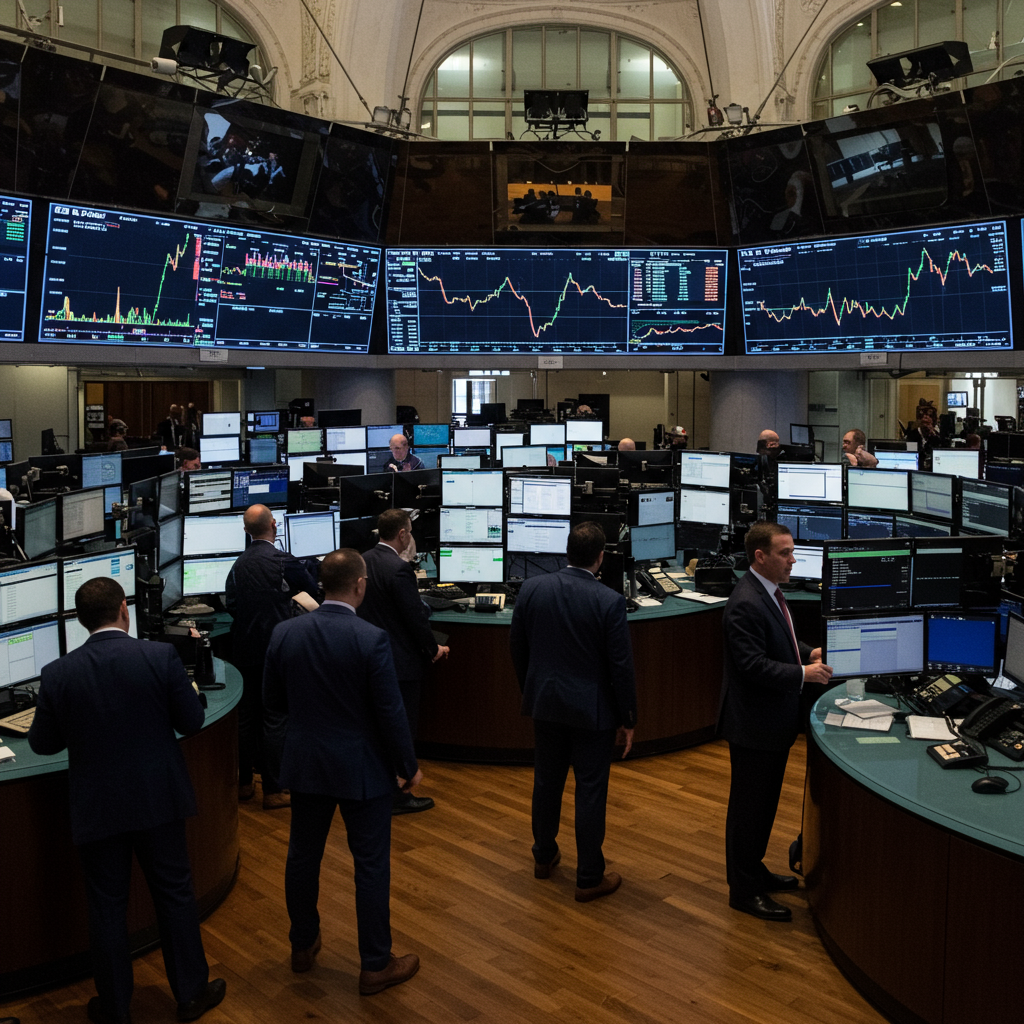Wall Street Hit by Geopolitical Jitters and Economic Headwinds
U.S. stock markets saw a significant downturn on Tuesday, June 10, 2025, as escalating tensions in the Middle East and signs of slowing domestic economic activity weighed heavily on investor sentiment. This market movement marked a return to volatility after a brief period of calm on Monday.
The S&P 500 index closed down 0.8%, erasing earlier gains and falling back near its starting point for the week. The Dow Jones Industrial Average dropped 299 points, or 0.7%, while the Nasdaq composite fell 0.9%.
Driving the market’s decline was another sharp increase in crude oil prices. Benchmark U.S. West Texas Intermediate (WTI) crude jumped 4.3% to settle at $74.84 per barrel. Brent crude, the international standard, added 4.4%, reaching $76.45 per barrel.
Middle East Tensions Fuel Oil Price Surge
The primary catalyst for the oil market spike was the intensifying conflict between Israel and Iran. Geopolitical anxieties heightened considerably following statements from President Donald Trump on social media, including a stark call for Iran’s “UNCONDITIONAL SURRENDER!” and comments about the safety of Iran’s leader.
This rhetoric followed a rapid shift in tone from the President, who had only hours earlier suggested a nuclear deal was “achievable,” before urging Tehran residents to evacuate. Such pronouncements amplified concerns already fueled by previous exchanges, including Israel’s attacks on Iranian targets and subsequent Iranian missile launches earlier in the month.
The conflict poses a direct threat to global oil supply chains. Iran is a major oil producer, and crucially, it sits adjacent to the narrow Strait of Hormuz, a vital chokepoint through which a significant portion of the world’s crude oil passes daily. While past conflicts in the region have caused temporary oil price surges, the market remains highly sensitive to any potential disruption in this critical shipping lane.
Weakening U.S. Retail Spending Adds Pressure
Adding to the market’s woes was new economic data indicating a potential slowdown in U.S. consumer activity. A report showed that retail spending in May was weaker than both the previous month and economists’ expectations.
Strong consumer spending has been a key pillar supporting the U.S. economy and warding off recession fears. However, analysts noted that the dip in May could represent a return to more normal spending patterns after an unusual boost in April, partly driven by consumers rushing to purchase automobiles ahead of anticipated tariffs. As one economic strategist put it, the data suggests consumers are “downshifting, but they haven’t yet slammed the brakes.”
Mixed Reactions Across Sectors
While higher oil prices often benefit alternative energy companies by making renewable sources more competitive, solar stocks surprisingly tumbled on Tuesday. This decline was attributed to concerns that Congress might phase out tax credits for solar, wind, and other clean energy technologies. Shares of Enphase Energy plunged 24%, and First Solar fell 17.9%.
Conversely, sectors traditionally seen as benefiting from conflict or higher energy prices, such as oil producers and defense contractors, have shown resilience or gains during this period of tension, although specific figures were not detailed for Tuesday’s trading in the original report.
On the corporate news front, some individual stocks saw notable gains. Jabil jumped 8.9% after reporting stronger-than-expected profits, partly crediting accelerated demand linked to artificial intelligence technology. Verve Therapeutics soared 81.5% following the announcement that Eli Lilly would acquire the genetic medicines company in a deal potentially valued up to $1.3 billion. Eli Lilly’s shares saw a modest 2% dip.
Bond Market Reflects Uncertainty, Fed Meeting Underway
In the bond market, yields on Treasury notes fell, a move often signaling investors seeking safer assets. The yield on the 10-year Treasury eased to 4.38% from 4.46% the previous day, reflecting the impact of the weaker retail sales data and potentially broader market uncertainty. (Note: Earlier in June, Treasury yields had briefly risen on concerns that surging oil prices could fuel inflation).
Markets also kept a close eye on the Federal Reserve, which began a two-day policy meeting. The overwhelming expectation among traders and economists was for the Fed to keep interest rates unchanged. The central bank has held rates steady this year, in part, due to uncertainty regarding the economic impact of potential tariffs and their effect on inflation, which has remained relatively tame and near the Fed’s 2% target recently. Financial markets were keenly anticipating the Fed officials’ updated economic and interest rate forecasts, set to be released the following day.
Internationally, stock markets reflected the cautious global mood, with indexes generally falling across Europe after a mixed finish in Asia. Tokyo’s Nikkei 225 index managed a slight gain after the Bank of Japan opted to keep its key interest rate unchanged.



